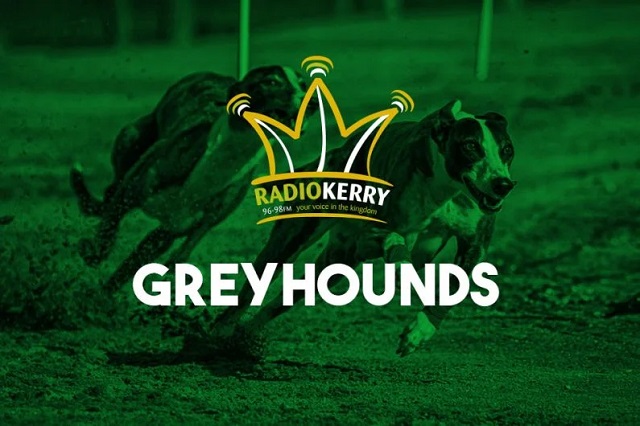Greyhound Recorder: In 2017, Ray Kaplan, a veterinarian and parasitologist at the University of Georgia. The time, it began getting emails from colleagues around the country requesting assistance with resistant parasite diseases in canines. The parasites were roundworms called hookworms, which feed on both people and animals. Rather than pets, Kaplan specialized in farm animals. However, the diseases mentioned in the emails resembled drug-resistant cases. Which he had previously researched in parasites that infect animals. Global drug resistance is a result of sheep and goats being overused as pets and being traded as commodities. These animals are treated with antiparasitic medications. It would be concerning if drug-resistant parasites were also spreading among canines. But until he began researching the issue, Kaplan was unaware of how serious it was.
About Greyhound recorder
Greyhound racing is done simply for fun and is an amateur sport in many nations. Greyhound racing is comparable to horse racing in other nations. It includes Australia, Ireland, the United Kingdom, and the United States. Where it is a component of the gambling sector. The long-standing criticism of the greyhounds’ treatment. It was in the commercial racing sector by animal rights and animal welfare organizations. It has played a significant role in the current industry improvements. With an estimated adoption rate of over 95% in the US. The greyhound adoption movement was started by kennel owners to help retired racing canines find homes as pets.
Owen Patrick Smith and the Blue Star Amusement Company constructed the nation’s first officially recognized commercial greyhound racetrack in Emeryville, California, in 1919. The oval-shaped track included Smith’s latest creation. The mechanical lure, which was supposed to be a more compassionate substitute for the live lures. It was used in conventional greyhound field coursing. 67 dog tracks—all illegal—had opened by 1930 across the nation.
Some of the new tracks employed an alternate lure running on an inside rail, although the first track used Smiths bait running on the outside rail. Dogs at other tracks wore the racing blankets that are still in use today. At the same time, dogs at Smith’s courses were identified by colored collars. Two-dog races were prevalent since greyhounds were scarce. Later, the number of dogs was expanded to eight. In one afternoon, several canines had to compete in multiple races.
Previous information of Greyhound recorder
Major Lyne-Dixson, a Canadian who played a significant role in the course, teamed up with another American, Charles Munn. To introduce the oval track and mechanical hare to Britain in 1926. Finding more backers proved to be challenging, though, so as the General Strike of 1926 approached. The two men searched the nation for more followers. After a while, they ran upon Brigadier-General Critchley. Who gave them the introduction to Sir William Gentle? With a combined fundraising of £22,000, they established the Greyhound Racing Association, modeled after the American ‘International Greyhound Racing Association’ (also known as the I.G.R.A.). The inaugural British meeting took place in Manchester’s Belle Vue Stadium
Following World War II, greyhound racing saw its peak attendance in the United Kingdom. In 1946, for instance, attendance was reported to have reached 75 million based on an annual totalisator turnover of £196,431,430. When off-course cash betting was made legal in 1960 by the UK Betting and Gaming Act. The industry started to collapse in the early 1960s. This drop has been largely mitigated by sponsorship. It restricted television coverage and the later removal of the on-course betting fee.
Medication
In a few of nations, the racing business actively attempts to stop the spread of doping incidents. Urine samples from all greyhounds competing in a race, not just the winners, are being recovered. In certain nations, greyhounds from which samples cannot be acquired for a predetermined number of consecutive races may be disqualified from competition. In addition to facing permanent bans from the National Greyhound Association and criminal fines. Violators may also lose their racing licenses, as determined by state gaming regulators. The greyhound’s trainer is always the “absolute insurer” of the animal’s health. Regardless matter how the prohibited chemical entered the greyhound’s system. The trainer is accountable for any positive test results.
According to a number of research studies, the greyhound racing sector contributed significantly to the emergence of drug-resistant hookworms. Greyhound farms frequently administered dewormers to their dogs even in the absence of an active infection. This allowed worms, which are continuously exposed to medications, to become immune to the drugs among the surviving worms. Drug-resistant hookworms are becoming increasingly prevalent, endangering both humans and pets alike.

Conclusion
Coming to a short conclusion I hope you got all the information you want. Greyhounds are raced around a track in the structured, competitive sport of greyhound racing. Greyhound racing comes in two flavors. One is coursing, which is currently illegal in most nations. The second one is track racing, which usually takes place on an oval track. An artificial lure, typically in the shape of a windsock. It is used in track racing, and it follows the greyhounds along a rail until they cross the finish line. Greyhound races frequently let the public place bets on the results, just like horse races do.
Greyhound racing is an organized, competitive sport in which greyhounds are raced around a track. There are two types of greyhound racing: track racing, which typically occurs on an oval track, and coursing, which is currently prohibited in most countries. In track racing, the greyhounds are followed down a rail by an artificial lure, usually shaped like a windsock, until they cross the finish line. Similar to horse races, greyhound races frequently allow the public to wager on the outcome.
Thank you for sticking with the article till the end.


